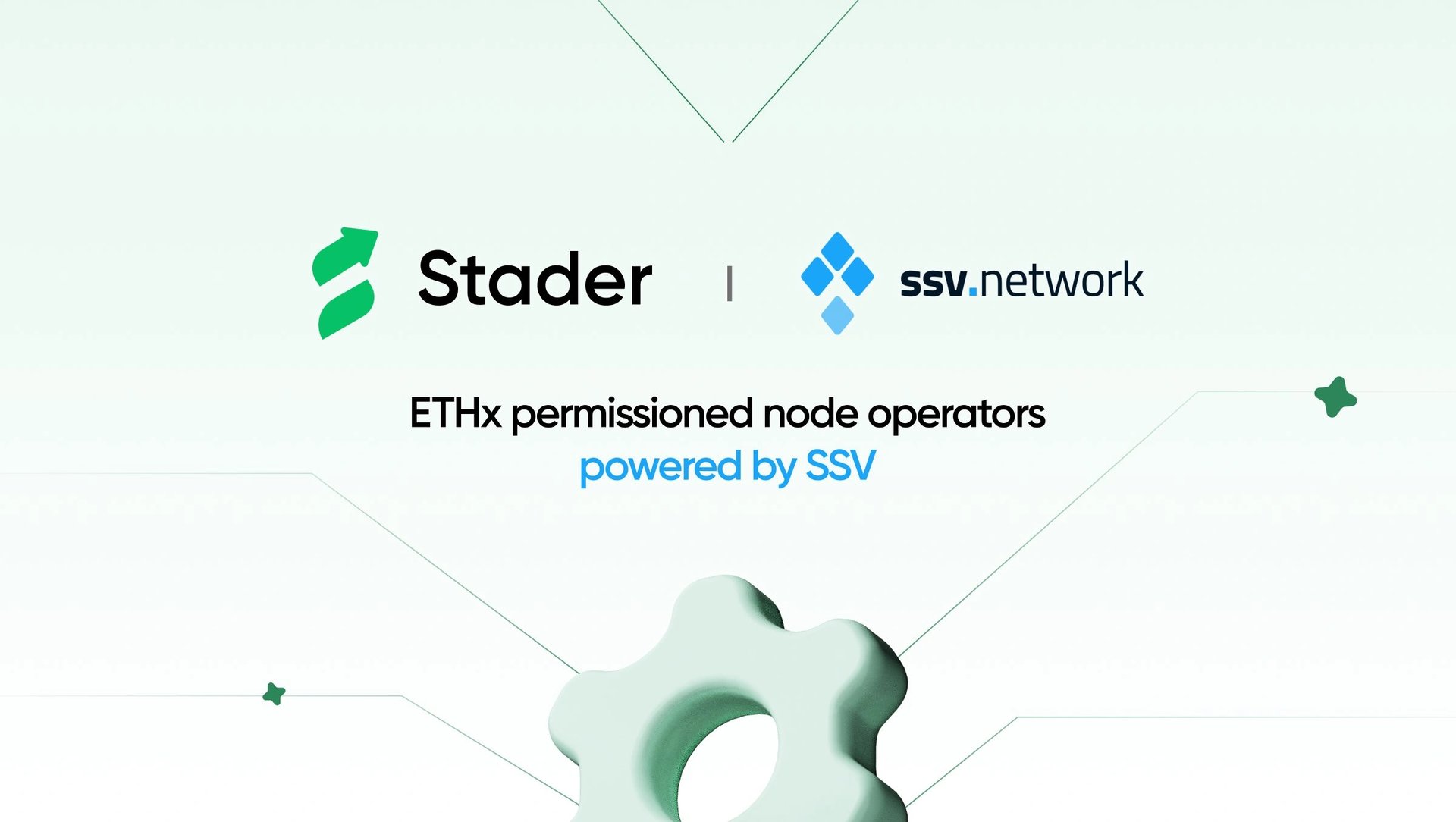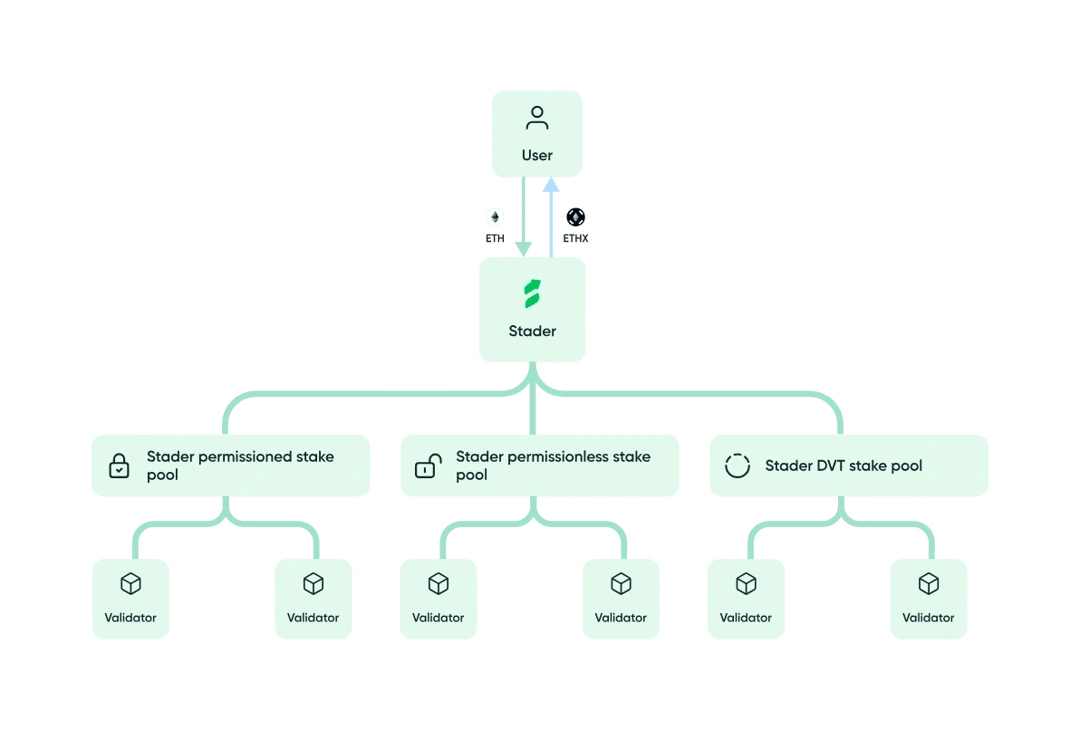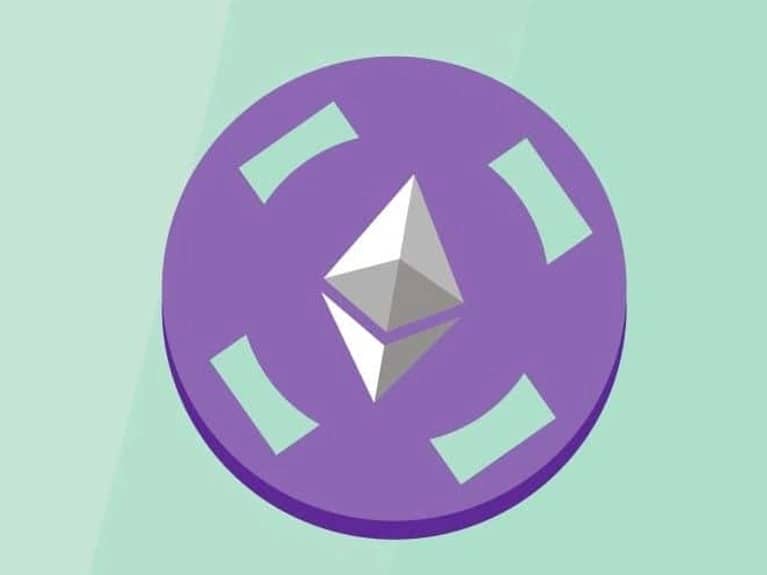위키 구독하기
Share wiki
Bookmark
Stader ETHx
Stader ETHx
Stader ETHx는 Stader Labs에서 개발한 유동적 스테이킹 솔루션으로, 사용자는 이더리움의 스테이킹을 통해 ETH를 스테이킹하고 유동적인 스테이킹 토큰인 stETHx를 받을 수 있습니다. 이 제품을 통해 사용자는 자산을 묶어두지 않고도 스테이킹 보상을 받으면서 탈중앙화 금융 (DeFi) 활동에 참여할 수 있습니다. [1][2][3][4]
개요
2023년 7월 10일에 출시된 Stader의 유동적 스테이킹 ERC-20 토큰 ETHx는 사용자와 노드 운영자에게 고유한 가치 제안을 제공하는 LSD를 만들고 ETH의 LSD 다양성을 높이려는 목표를 가지고 있습니다. [5]
ETHx는 지속적인 스테이킹 보상을 보장하여 이더리움 보유량을 늘리는 동시에 dApp과 통합하여 사용자가 추가적인 수익 농사 및 대출 기회를 탐색할 수 있도록 합니다. 또한 ETHx는 이더리움의 탈중앙화 노력에 기여하여 네트워크의 확장성과 복원력을 높입니다. [3][4]
2024년 7월 4일, Stader Labs는 SSV Network와 파트너십을 맺어 이더리움의 탈중앙화를 유지했습니다. 따라서 $ETHx 권한 부여 노드 운영자는 이제 SSV에 의해 지원됩니다. [8]

ETHx 설계
ETHx는 탈중앙화, 확장성 및 복원력을 위해 설계된 다중 풀 아키텍처를 도입합니다. 이 아키텍처는 권한 없는 풀과 권한 있는 풀을 포함하여 누구든 노드를 운영하고 일관된 성능을 제공하는 큐레이팅된 검증자를 운영할 수 있도록 합니다. 분산 검증자 기술(DVT)이 더 안정적으로 되면 ETHx는 향후 전용 DVT 기반 스테이크 풀을 채택하여 진화하는 ETH 스테이킹 생태계에 적응할 수 있도록 합니다. [2]

ETHx 거버넌스
ETHx 거버넌스는 커뮤니티 멀티시그, 매니저 멀티시그 및 운영자의 세 주체가 유지합니다. 이러한 주체는 ETHx 생태계 내에서 투명성, 책임성 및 균형 잡힌 의사 결정 및 운영 방식을 보장하기 위해 협력합니다. Stader의 미래 비전의 일환으로, 온체인 거버넌스가 점진적으로 도입되어 Stader의 거버넌스 토큰인 SD와 ETHx 보유자가 프로토콜 변경을 제안하고 구현할 수 있도록 하여 탈중앙화된 의사 결정과 포용성을 촉진합니다. [6]
ETHx 스테이킹
ETHx를 통해 사용자는 자산 유동성을 유지하면서 이더리움 스테이킹의 이점을 누릴 수 있습니다. 작동 방식은 다음과 같습니다. [7]
예치 및 토큰 발행
사용자가 이더리움을 ETHx 스테이킹 계약에 예치하면 프로토콜은 사용자에게 동일한 수의 ETHx 토큰을 발행합니다. 이러한 토큰은 사용자의 스테이킹된 이더리움을 나타내는 유동적인 표현으로, 사용자는 잠재적인 스테이킹 보상을 희생하지 않고도 자산에 대한 제어권을 유지할 수 있습니다.
다중 풀 아키텍처
예치되면 사용자의 이더리움은 다중 풀 아키텍처를 활용하는 Stader 스테이킹 매니저에 의해 관리됩니다. 스테이킹된 이더리움은 권한 없는 노드 운영자 풀과 권한 있는 노드 운영자 풀로 분할됩니다. 이러한 설정은 스테이킹된 자산에 대한 확장성, 탈중앙화 및 수익률 잠재력 최적화를 보장합니다. [7]
노드 네트워크 및 보상 생성
풀의 이더리움은 그런 다음 ETHx 노드 네트워크에 할당됩니다. ETHx 노드 네트워크는 프로토콜의 스테이킹 계약과 상호 작용하는 이더리움 노드의 탈중앙화된 그룹입니다. 이러한 노드는 이더리움 비콘 체인에 대한 중요한 검증 작업을 수행합니다. 이러한 노드가 수행하는 작업은 스테이킹 보상을 생성합니다. [7]
누적된 보상 및 가치 성장
노드가 보상을 생성하면 이러한 보상이 누적되어 이더리움에 대한 ETHx의 환율이 증가합니다. 이러한 성장 메커니즘은 ETHx 토큰이 시간이 지남에 따라 가치가 증가하여 스테이킹된 이더리움에서 얻은 스테이킹 보상을 반영하도록 합니다. [7]
보안
Stader ETHx는 블록체인 보안 회사의 엄격한 감사와 취약성을 식별하기 위한 상당한 버그 바운티 프로그램을 포함한 여러 보안 조치를 사용합니다. 이 플랫폼은 하드웨어 지갑과 안전한 소프트웨어 솔루션을 사용하여 사용자 자산을 보호하고, MEVBoost 및 슬래싱 방지와 같은 특정 기능을 통해 스테이킹된 자산을 보호합니다. 또한 Stader ETHx의 코드는 오픈 소스이므로 커뮤니티 검토 및 기여를 통해 보안을 더욱 강화할 수 있습니다. [3]
잘못된 내용이 있나요?
